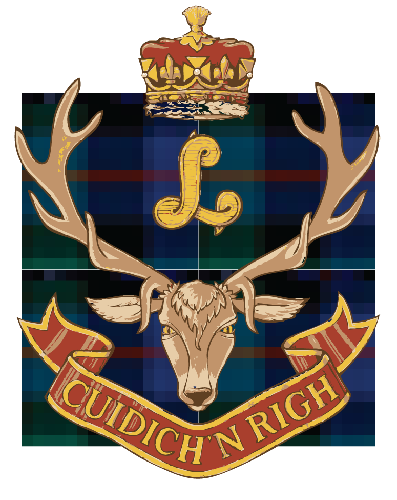Remembering Vimy: the battle that helped make Canada a country
Steve Bartlett sbartlett@thetelegram.com
A wire fence cordons off ground cratered by explosives a century ago.
Rebuilt trenches and tunnels, elaborate to design and dig, prompt instant reflection on months of burrowing.
Mother Canada, part of Canadian National Memorial, looks down at the battlefield where approximately 3600 Canadian soldiers died 95 years ago. - Photo by Steve Bartlett/The Telegram
A massive monument — which includes two 30-metre columns as well as 20 human figures — towers above.
Part of the memorial: a sombre sculpture known as Mother Canada.
She grieves for the thousands of lives lost in the fields below. You can contemplate her, and mourn with her, for hours.
This is Vimy Ridge, a First World War battlefield that is a landmark in France — and in Canadian history.
It was on this seven-kilometre stretch of hill 100 years ago Sunday that the Canadian Corps were part of an offensive that some argue helped build this country.
Vimy Ridge was a German stronghold; had been since early in the war. Thousands of Allied soldiers died in earlier attempts to recapture it.
Canadians started arriving there in late fall 1916.
Their numbers multiplied and formed a makeshift city of 100,000 over the winter, as preparations for an offensive continued.
The training and planning was extensive. The groundwork was literal.
“Digging trenches and tunnels and lugging artillery shells through miles of wet, muddy trenches was brutally exhausting work,” the Vimy Foundation website notes.
“Soldiers grumbled and complained but they needed to win the war before they could go home. Exhaustion was a small part of the price.”
Tunnels were bored beneath enemy lines and filled with crater-causing explosives.
Other tunnels saw train tracks laid, and systems for lighting and water. These tunnels were used to store arms and supplies.
To confuse the enemy about the size and time of their attack, the Allies showered the Germans with heavy fire — from different directions and in varied volumes — during the days leading up to the offensive.
Early on April 9 — Easter Monday that year — upwards of 20,000 Canadians began their offensive in snow, sleet and wind.
According to a Veteran Affairs synopsis: “The Canadians advanced behind a creeping barrage. This precise line of intense Allied artillery fire moved ahead at a set rate and was timed to the minute. The Canadian infantrymen followed the line of explosions closely. This allowed them to capture German positions in the critical moments after the barrage moved on to the next targets but before the enemy soldiers could emerge from the safety of their underground bunkers.”
There were significant early casualties and the battlefield soon filled with wounded men.
Editorial cartoon from April 10, 1917 intended as a satire on the German high command, but it also offered a vivid - if unintentional - foreshadowing of the lengthy Canadian casualty lists in the aftermath of the attack on Vimy Ridge. SUBMITTED PHOTO
The Canadians pressed on and, by noon, captured most of the hill.
Over the next three days, they pressed up and captured the ridge’s peaks — Hill 145 and a point known as the Pimple.
The Germans’ retreat gave Canada the greatest military victory of its young history.
“In those few minutes I witnessed the birth of a nation,” Brig.-Gen. Alexander Ross is quoted as saying.
Vimy marked the first time troops from across Canada — from the Cape Breton Highlanders in Sydney to the Seaforth Highlanders in Vancouver — fought alongside each other.
A number of young men from Newfoundland, decades away from Confederation, also fought in Canadian uniform at Vimy.
Because of Canada’s vintage — at 50 a mere toddler compared to many Allied and enemy countries — Vimy was a source of public pride and can-do confidence.
The battle was thought to have helped Canada emerge from under the British shadow, and boosted the country’s image around the globe.
It, and other First World War battlefield successes, led to Canada having a signature on the war-ending pact, the Treaty of Versailles.
But victory at Vimy came with huge price and sacrifice — 3,598 Canadian soldiers died, most of them young men.
More than 7,000 were wounded.
Five years after the battle, a grateful France granted the Vimy Ridge battlefield to Canada.
The towering monument is a memorial to the battle, and the 60,000 Canadians who lost their lives during the First World War.
It took 11 years to build and was unveiled in 1936.
Besides the impressive sculptures, it includes the names of the 11,285 fallen troops with no known grave.
Standing under Mother Canada, you wonder what those men, and their enemies, experienced.
The labourious preparations.
The gripping fear and courage mustered.
The tears cried by soldiers on both sides, and cried figuratively by Mother Canada for the past 80 years.
Then there are the tears streaming down your cheeks as you grasp the horrors that took place on the grass below and the poignancy of the statue towering above.
This is a sacred place.
There’s debate about Vimy’s importance in terms of nation-building, and also what the battle ultimately meant to the Allied effort during the First World War.
Other Canadian offences — such as Passchendaele — played a bigger role in the war’s outcome, some argue.
Still, Vimy remains a site of Canadian sacrifice and an important battle to our identity.
It can’t be forgotten.
Take a moment to remember the fallen, the explosives they faced, the tunnels and trenches they dug, and our soldiers’ sacrifices.
On April 9, we are all Mother Canada.
Steve Bartlett is an editor with TC Media. Reach him at steve.bartlett@tc.tc.



